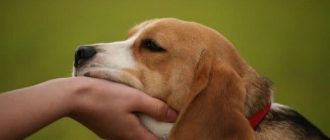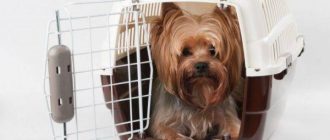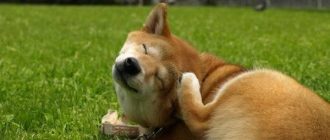Almost all dog owners have encountered this phenomenon like lice and fleas. However, these are not all parasites that able to attack your pets. Among the more insidious pests, living on dogs, beetles can be noted. Their food is fluff and skin flakes, so insects are also called woolly eaters, and they relate to the detachment of poohoedov. Since they are pathogens quite a serious trichodectosis disease, dog owners should know the enemy, which is called “in person” and to identify as early as possible unexpected “roommates” of your favorite.
Content
- 1. What are the beetles
- 2. Symptoms of flushing in dogs
- 3. Treatment and preventive measures
What are the beetles
Trichodectosis, or in other words mallophagosis, is accompanied by a number obvious signs, so do not notice the existing changes impossible. However, it’s better to detect them at earlier stages, when the parasite has not yet had time to significantly affect the general condition dogs.
The beetles themselves are small insects devoid of wings, their size varies from 1 to 2 mm. But if you look at the photo enlarged beetles, then they may seem quite pretty formidable and dangerous pathogens of the disease.
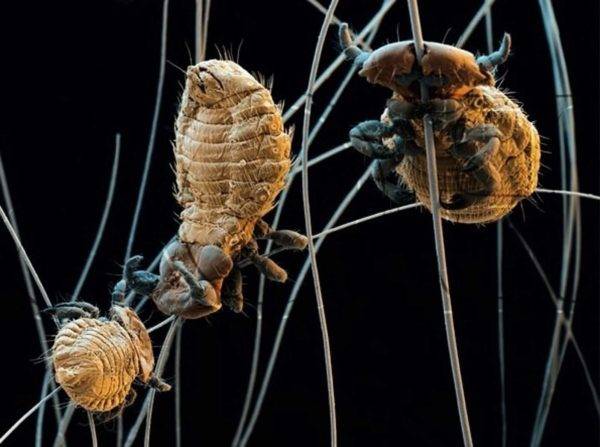
Lice dogs in dogs under a microscope
Females are quite fertile, and their masonry consists of dozens of eggs that hold tight to the root sections of hairs. After 5-10 days, hatching occurs larvae, and they pass the next stage of development, duration which is four weeks old. This time is enough so that the parasite’s larva becomes an adult capable of breeding.
Insects breed constantly, so they are pretty fast occupy more and more large areas, posing as various signs. Statistics show that trichodectosis infection young dogs are more exposed, however, and older dogs Pets are not insured against the disease.
Favorite places for the localization of colonies of beetles are tail, head area and inside of limbs. Right here most often signs of illness are found.
Dog Symptoms
If your pet has the following signs of dog-eating, this, of course, should concern the owner:
- partial hair loss;
- the coat becomes tousled and dull;
- in the wool there are small grains of whitish color, which resemble dandruff;
- the pet is worried about constant itching, it combes the skin to blood, damage and scabs appear.
When parasites do more harm, the dog is overly nervous and worried. He begins to eat poorly or not at all refuses food, but the need for fluid is significantly increasing. Intolerable itching leads to the fact that the pet cannot sleep well, constantly wakes up, scratches affected areas and bites into existing sores.

Since pathogens adversely affect local immunity, damaged skin become defenseless before bacterial infections. Are formed on the skin suppuration and ulceration. In addition, the activity of the beetles can cause the development of allergic dermatitis, which significantly aggravate the condition of the animal.
If the symptoms are not so pronounced and determine whether pet parasitic insects difficult, you can use in the following way: you need to warm the dog’s coat under an ordinary lamp or let the dog stay in the sun. Since the beetles quite thermophilic, they will try to go up, closer to heat and light, where it will be easier to detect them.
Treatment and Prevention
It is very difficult to treat whipworms in a dog, and this is due to their way of life. If we consider fleas, then they are literally eggs are scattered throughout the body of the animal, while adults marching everywhere, which makes their removal difficult. But the lice eaters dogs, if I may say so, “couch potatoes” and try not to leave favorite place.
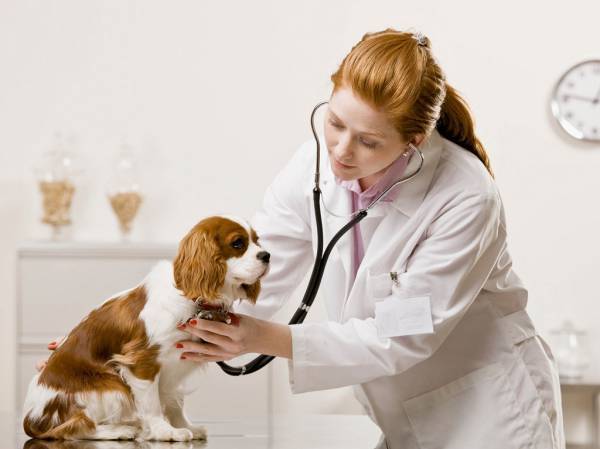
So all periods of development – from an egg to an adult insect, the parasite passes on the body of the “host”, the main problem of treatment is the selection of a drug that can act in all stages. Be sure to take the dog to an appointment with a veterinarian for clarification of the diagnosis. Only a doctor can choose the most appropriate therapy based on the degree of disease, condition sick animal and body features.
All funds are used in accordance with the recommendations specified in instructions:
- Zoo shampoos (“Meadow”, “Demos Suite”, “Fitoelita”) – as with this disease is not recommended often washing a pet, option although it is common, but not the best. One more an important nuance – the action of the product is not long, and so get rid of new hatched individuals in a week and a half the procedure should be repeated.
- Sprays (Decor-1, Front Line, Defendog) – effective form means, but it is recommended to be careful when applying to the drug did not enter the mucous membranes, and the dog did not licked.
- Dusty (Sevina 3%, chlorophos 3%).
- Drops (“Bars”, “Dana”, “Advantage”, “Irbis”) – means in a small amount applied to the withers, has a long action.
See how to give medicine to a dog.
Before applying an antiparasitic agent, affected areas need to be treated with an antiseptic, it can be chlorhexidine, hydrogen peroxide, brilliant green. Itching will help special tool Stop itch. Although lice eaters do not live outside the host, nevertheless, for preventive purposes, it is worth treating the dog bedding, furniture and other places that the house visits pet, insecticidal agents.
If trichodectosis infection has led to the development of an allergic reaction or secondary bacterial dermatitis, then treatment supplemented with antihistamines, antibiotics. Also to replenish the body with useful elements, recommended give the dog a vitamin and mineral supplement. As preventive measures do not allow the pet to communicate with unfamiliar, and especially stray dogs regular inspections for parasites, disinfection of objects care and bedding.
In warmer times, when the risks of infection are much higher, you can put on a special antiparasitic collar (Dr. Zoo, StrongHold) or treat the animal with repellents. Experts warn that trichodectosis can lead to complications, therefore, it is recommended to contact the first symptoms to the veterinary clinic.

